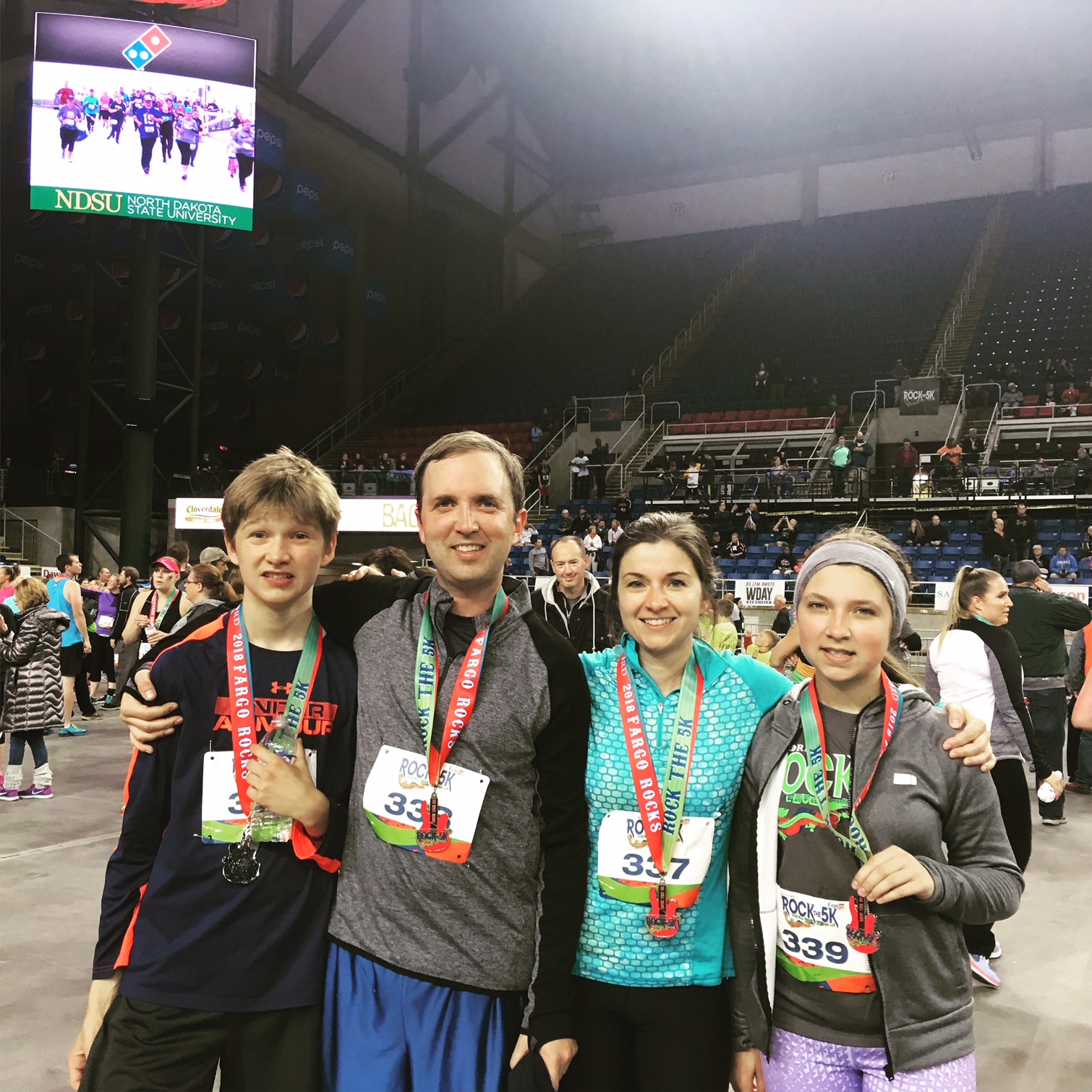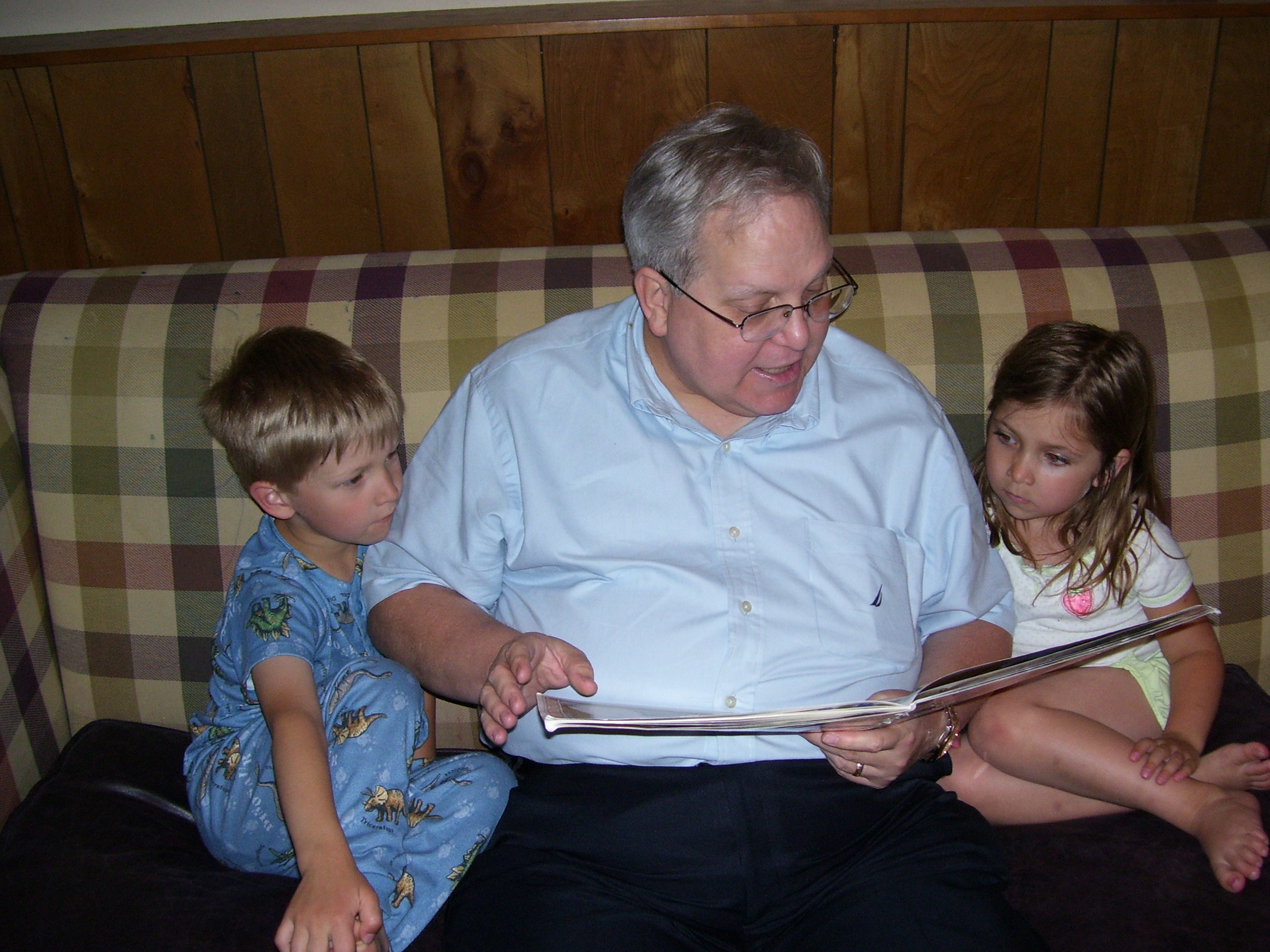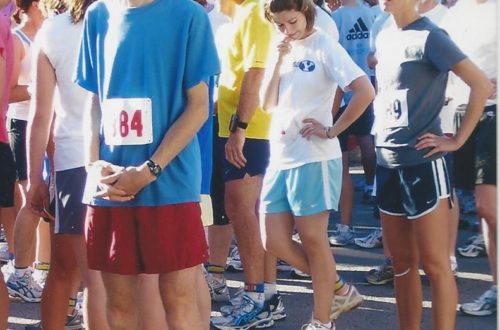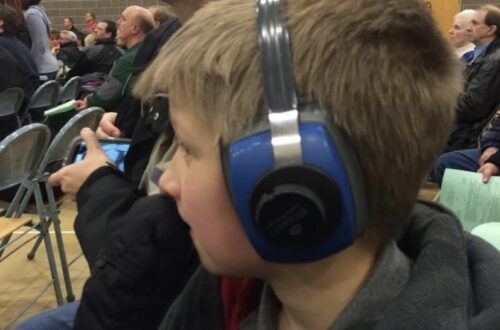
Born to run

I don’t know how he does it, but without fail, when J starts a new season of XC, track, or runs a race in the Fargo Marathon, he takes off minutes–MINUTES off of his PR from the previous season. This weekend was the Fargo Marathon and J took off 1:39 off of his 5K time and 3:21 off of his 10K time. And Steve and I were totally shocked at how much improvement he’s made from last year’s 2017 5 and 10K races. J’s been running XC and track for three years now. He’s a conditioned runner and those dramatic reductions in time should start to wane and finally plateau. But they’re not.

Over the past three years, J’s coaches have taught him how to work hard–and in the beginning that was a really hard lesson to learn. But J’s gotten really good at sticking to the mileage and running to the end when things get tough. He shows up to every practice and participates in summer running and winter running in the off seasons. And he really, REALLY loves running. He was so pumped for track meets this year and couldn’t contain his excitement for the Fargo Marathon races. That work ethic and attitude is what helps you take off minutes off your times.
But the one thing I don’t understand is how these dramatic improvements keep happening when there are still so many physical strikes against him. His running form is terrible. To quote one kid from J’s last track meet (who didn’t know J), “how is he even able to run like that?”–“like that,” referring to J’s right arm, dangling at his side the entire race.

That’s my question too–how can you have so much improvement when there are so many things that are still fundamentally wrong and still haven’t changed? J ran the entire 10K with his right arm dangling, just like it had done last year and still took off 3:21. I don’t know how that physically happens. Just try running down the block with one arm and see how hard it is. Arm swing and form is SO integral to running. Researchers at the University of Colorado at Boulder found:
“the volunteers used the least energy and were most efficient when they ran normally, their arms swinging at their sides. With each change in arm position, their efficiency dropped. Holding their arms behind their backs required 3 percent more energy than running normally; draping them across their chests used 9 percent more; and parking them on their heads demanded 13 percent more energy.
The motion-capture recordings established why the oddball arm positions were so inefficient. When the runners did not swing their arms, the biomechanical measurements showed, they could not readily counterbalance the pendulum action of their legs. Their upper bodies began to oscillate. Like Weebles, they wobbled, increasing their bodily movements and energy expenditure…’Normal arm swing is energetically a much cheaper way to counteract the motion of the legs than using the muscles in the torso,’ said Christopher Arellano, an National Institutes of Health postdoctoral fellow at Brown University and lead author of the study.”

The arm swing is just one problem. J also has really bad overpronation. It’s nearly impossible to find the right support for his shoes to prevent his ankles from collapsing in (they actually rub against each other and sometimes bleed when he runs). Just on the bio-mechanical level there’s a lot of things that would seem to hinder such consistent leaps of improvement. There’s also the mental parts of running he hasn’t figured out yet: how to pace himself, the competitive drive, etc.

But despite all of the things that are going physically wrong, he’s finding a way to do it. He’s finding a way of sticking with his coaches and putting in the work and improving. It’s sometimes really emotional to think about. This poor kid really struggles with every aspect of life: physical, emotional, and mental.


It’s even more emotional to think about how this plays out in other areas of his life. J works so hard to listen, read, write, and communicate despite the fact that he has visual and auditory integration issues. Yes, he’s not caught up to everyone else (just like XC and track) but it’s crazy to see the improvements he makes from year to year. Especially when those processing issues make it a million time harder to look at and figure out a math problem or read a book. I know to a lot of people it’s easy to see all the things he’s “still not doing” but holy cow if you saw this kid last year, or even the year before, you wouldn’t believe what he’s doing now.

It’s after a weekend like this that I really appreciate the hard work J’s coaches put into making J the best runner he can be. It makes me also realize how much J–on his own, and in his own way is working the best he can to improve himself despite the other complications have that his peers don’t. And that’s pretty darn inspiring.
(And for those of you who are wondering?–No, I wasn’t able to keep up with J. He finished a little less than four minutes ahead of me 🙂 I’m just really glad we found each other after the race. He came right up to me after I crossed the finish line and grabbed my water bottle and said, “Hey mom, where was I supposed to meet you again?”)




